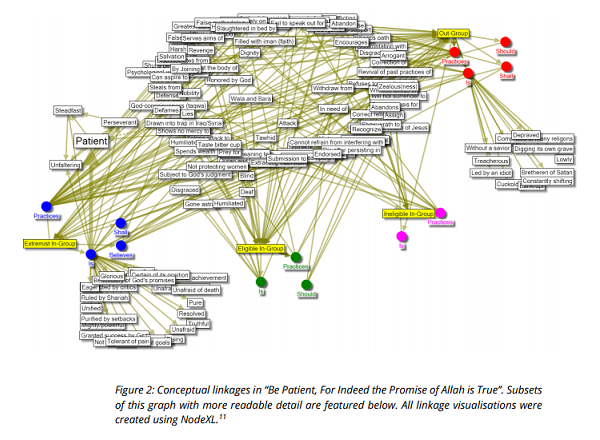What is “a multicausal and multilevel understanding”?
Friday, April 27th, 2018[ by Charles Cameron — if you can lose your car in a multilevel parking garage, imagine how easy it is to lose your mind in a multilevel understanding ]
.
I mean, what is multicausal and multilevel understanding anyway?
We know what the words mean, and can possibly gloss over them without pausing for the question as I intend it. But pause, please. What is it, in terms of brain function and or training, that gives us access to multicausal and multilevel understanding?
**
I came across the phrase in the publisher’s abstract for Bart Schuurman‘s book Becoming a European Homegrown Jihadist:
How and why do people become involved in European homegrown jihadism? This book addresses this question through an in-depth study of the Dutch Hofstadgroup, infamous for containing the murderer of filmmaker Theo van Gogh, who was killed in November 2004 in Amsterdam, and for plotting numerous other terrorist attacks. The Hofstadgroup offers a window into the broader phenomenon of homegrown jihadism that arose in Europe in 2004 and is still with us today. Utilizing interviews with former Hofstadgroup participants and the extensive police files on the group, Becoming a European Homegrown Jihadist overcomes the scarcity of high-quality data that has hampered the study of terrorism for decades. The book advances a multicausal and multilevel understanding of involvement in European homegrown jihadism that is critical of the currently prevalent ‘radicalization’-based explanatory frameworks. It stresses that the factors that initiate involvement are separate from those that sustain it, which in turn are again likely to differ from those that bring some individuals to actual acts of terrorism. This is a key resource for scholars of terrorism and all those interested in understanding the pathways that can lead to involvement in European homegrown jihadism.
**
I’d expect Bart Schuuman fills the void in our understanding as described. But I was in another discussion today, in which a friend of mine, Mike Sellers, said he’d been trying to teach analysts at Ft Meade the kind of thinking that can hold two ideas, possibly contradictory, in the mind at one time. He found the task both interesting and difificult. But how do you manage the task of multicausal understanding without what I call contrapuntal thinking — the ability to hold two or more thoughts in mind at the same time?
My friend’s teaching is strongly influenced by systems thinking, as first devised by Jay Forrester of MIT. Mike has a great lecture on systems and systems thinking in the context of games — he was lead designer on games like Sims 2 —
My own approach in the HipBone Games is to ask players to create a single, deeply connected “thought” out for ten individual ideas on a suitable ten-move game-board — with a “two idea” board for my DoubleQuotes games:
Over the course of twenty years experimenting, I’ve realised my DoubleQuotes is the ideal format for teaching / learning “contrapuntal thinking” — basically, that same “ability to hold two or more thoughts in mind at the same time” — or “how to think in terms of systems” — or “multicausal and multilevel understanding”..
**
Hay, this is relevant and more than relevant. Macron‘s address to the joint session of Congress today included an appeal for a renewal of multilateralism:
This requires more than ever the United States involvement, as your role was decisive in creating and safeguarding the free world. The United States is the one who invented this multilateralism, you are the one who has to help to preserve and reinvent it.
Here, see how that works:
**
Multilateral means many-sided, eh? — and considering many sides at once requires the by-now familiar “multicausal and multilevel understanding”.
On Iran, he repeated his support for the nuclear trade deal and outlined a four-part solution to Trump’s concerns about the deal and Iranian expansionism in the Middle East.
So just the Iran deal requires a four-sided understanding at minimum. And let me remind us, four-fold vision was the highest hope of William Blake, who wrote to Mr Butts — but I’ll show you the poem alongside one of his illustrations of the concept:
Multicausal and — particularly, perhaps, in view of Blake — multilevel understanding may be more demanding than at first we think.
And the world? The world requires this of us.
_____________________________________________________________
Helpful books:
Amazon:
Bart Schuuman, Becoming a European Homegrown Jihadist: A Multilevel Analysis Mike Sellers, Advanced Game Design: A Systems Approach














